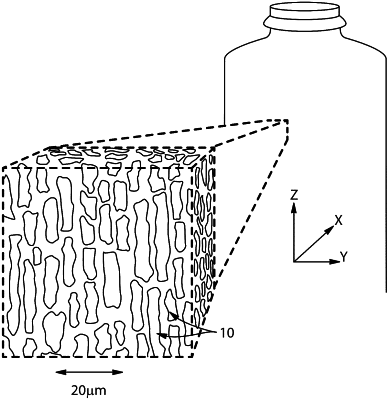| CPC C08K 5/5419 (2013.01) [B29C 49/0005 (2013.01); B29C 49/04 (2013.01); B29K 2101/12 (2013.01); B29K 2105/0094 (2013.01); B29L 2031/7158 (2013.01)] | 18 Claims |

|
1. An injection stretched blow molded bottle with an improved visual effect comprising a neck and a body wherein the body comprises at least one layer comprising:
a. more than 50 wt. % of a first thermoplastic resin selected from the group consisting of polyethylene terephthalate (PET), polyethylene terephthalate glycol (PETG), polyethylene naphthalate (PEN), post-consumer recycled polyethylene terephthalate (PCRPET), and combinations thereof;
b. between about 0.1 wt. % and about 20 wt. % of a second thermoplastic material comprising a viscosity of from about 2,500,000 to about 50,000,000 cst;
wherein the second thermoplastic material is immiscible or partially miscible with the first thermoplastic material;
c. between about 10 to about 1000 discrete domains of the second thermoplastic material per 1000 μm3 of the at least one layer, wherein the discrete domains are dispersed throughout the at least one layer; wherein the domains comprise a length, a width, and a thickness and wherein the domains are longer than they are thick and/or wide;
wherein there is a refractive index difference of at least about 0.04 between the second thermoplastic material and the thermoplastic resin;
wherein the body further comprises a gloss outer surface.
|